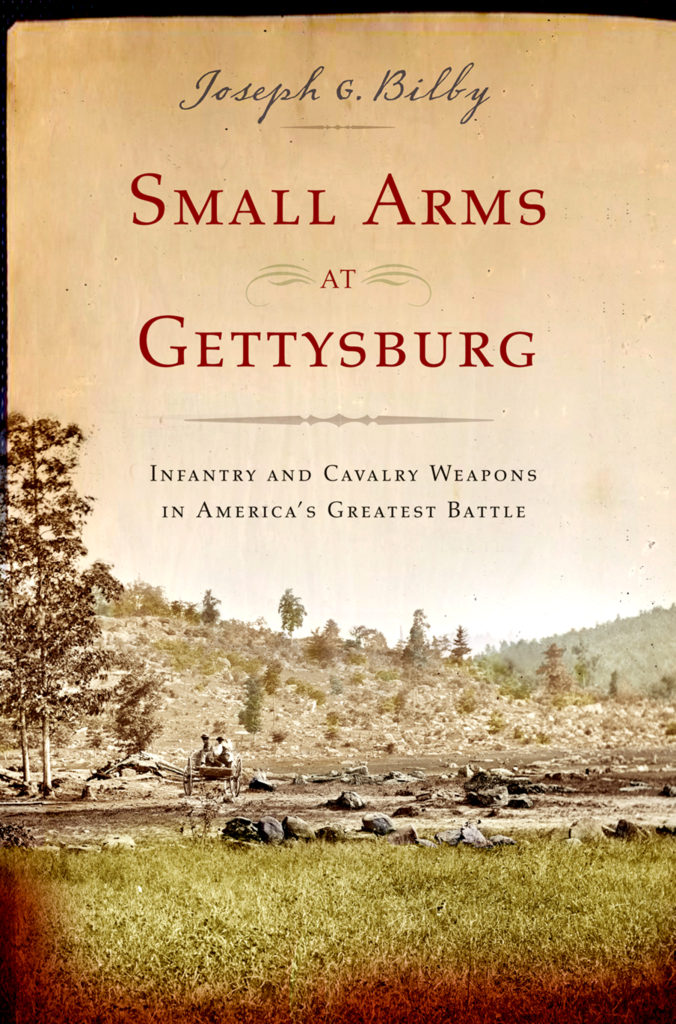

Small Arms at Gettysburg
Infantry and Cavalry Weapons in America's Greatest Battle
$30.00 Add to Cart Save 25% on every book by joining our Book Club


The Effect of Soldiers’ Weapons on the Turning Point of the Civil War
The three-day battle of Gettysburg has probably been the subject of more books and articles than any other comparable event. Surprisingly, until this work, no one has analyzed the firearms and other individual soldier’s weapons used at Gettysburg in any great detail. The battle was a watershed, with military weapons technologies representing the past, present, and future—sabers, smoothbores, rifles, and breechloaders—in action alongside each other, providing a unique opportunity to compare performance and use, as well as determining how particular weapons and their deployment affected the outcome and course of the battle.
Small Arms at Gettysburg: Infantry and Cavalry Weapons in America’s Greatest Battle covers all of the individual soldier’s weapons—muskets, rifle-muskets, carbines, repeaters, sharpshooter arms, revolvers, and swords—providing a detailed examination of their history and development, technology, capabilities, and use on the field at Gettysburg. Here we learn that the smoothbore musket, although beloved by some who carried it, sang its swan song, the rifle-musket began to come into its own, and the repeating rifle, although tactically mishandled, gave a glimpse of future promise. This is the story of the weapons and men who carried them into battle during three days in July 1863.

Joseph G. Bilby received his BA and MA degrees in history from Seton Hall University and served as a lieutenant in the 1st Infantry Division in Vietnam in 1966-1967. He is a columnist for Civil War News and assistant curator at the National Guard Militia Museum of New Jersey. He is author of a number of books, including A Revolution in Arms: A History of the First Repeating Rifles and New Jersey: A Military History.
“Bilby begins his book with a review of the development of the breech-loading rifle based largely on established secondary sources, and on the history of the mechanical design work of B. T. Henry and Christopher Spencer. This will be familiar material to readers of small-arms literature. Bilby’s important contribution, however, is his analysis of the evidence for the use made of the Spencer and Henry rifles in battle. He confronted the problem of sparse records and hearsay evidence and solved it in part by using the reports of ammunition expended by particular regiments. Readers will find the book well indexed, nicely produced, and tastefully illustrated.”—Technology and Culture
“Joseph Bilby’s Small Arms at Gettysburg is much more than just a look at the hardware used in America’s greatest battle. Bilby is unusual in having not only the hands-on skills as a long-time black powder shooter (as well as being a columnist for Civil War News) but the eye of a tactical historian as well. The fact that he writes well is a nice bonus also—rather than being an arms catalog the book is crisply written using combat anecdotes mixed with sound small unit analysis. It’s not just a look at Gettysburg but a much broader commentary on the use and adoption of various types of weapons during the entire war. In terms of weapons technology, Gettysburg was a watershed event since it was the first really large-scale battle in which almost all infantrymen carried the rifle-musket (less than one in ten was armed with a smoothbore). Thus the battle is worth studying for that reason alone, and I’d recommend it to anyone who’s trying to form an opinion about the ongoing controversy about the relative effectiveness of the rifle musket vs. the smoothbore. ‘Here we learn,’ Bilby writes, ‘that the smoothbore musket, although beloved by some who carried it, sang its swan song, the rifle-musket came into its own, and the repeating rifle, although tactically mishandled, gave promise a glimpse of future promise.’”—TOCWOC—A Civil War Blog